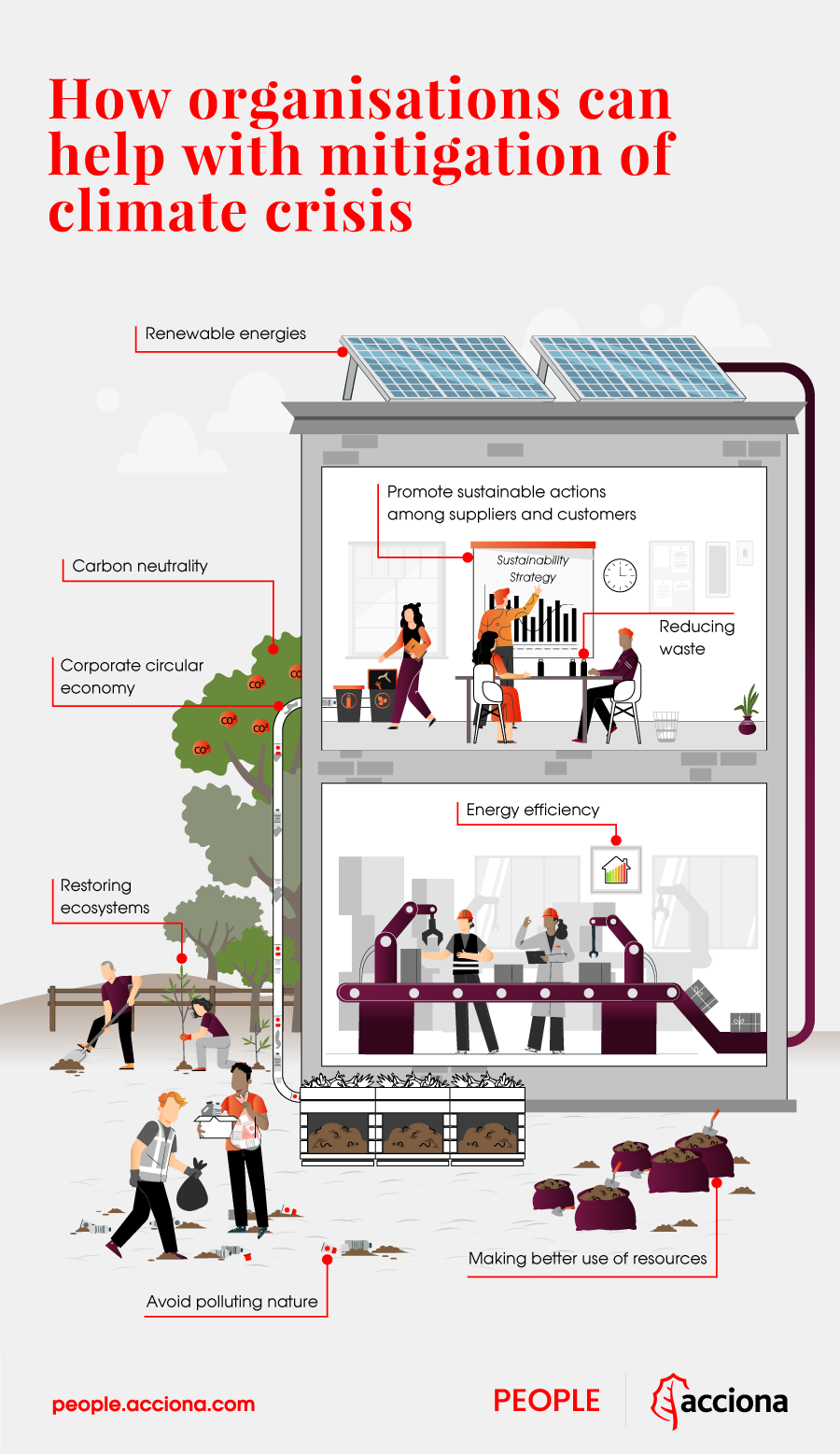Some companies impact on climate change and suffer from its consequences. But they also have extraordinary power to be part of the solution. Organisations can become agents of change in the face of global warming through internal measures without waiting for government legislation. And in caring for the wellbeing of their corporate society, of their employees, companies must realise that they must also care for the sustainability of the planet they live on.
What will I read about in this article?
The impact of climate change on business and the global economy
The climate crisis is undoubtedly one of the major strategic challenges that organisations around the world are grappling with to protect our future and that of the planet. Extreme weather events such as storms, heat waves and floods are estimated to have caused economic losses of around half a trillion euros over the last 40 years across Europe, according to an analysis by the European Environment Agency (EEA).
But there’s more. The global economy could lose up to 18% of GDP by 2050 if no action is taken to mitigate the impacts of climate change, warns Swiss Re Institute. The insurer estimates that this figure will fall to 4% if the 2015 Paris Agreement targets are met. That is, if the global rise in temperatures is limited to 1.5°C.
The private sector has an essential role to play, especially in the areas of climate ambition, low-carbon technology development and climate adaptation. A role that can also be profitable. According to Bloomberg, the market for climate change adaptation could be worth $2 trillion a year by 2026.
Governments will expand legislation and increase their ambition to limit rising temperatures and promote mitigation measures. But business can – and must – lead the way, with innovative and pioneering plans to maintain sustainable economic development while protecting the planet and the people who live on it.

“The market for climate change adaptation could be worth $2 trillion a year by 2026”.
What can companies do?
There are two words that can link business leaders and the climate crisis we face: responsibility and opportunity. Many organisations have been (and are) a major source of carbon emissions themselves. They’re part of the problem. But they can become, with a willingness to change, an indispensable part of the solution.
“Creating a people-centred organisational culture means integrating care for the place they live in into the company’s values.
Aligning your strategy with the limit of rising temperatures
Reducing carbon emissions is the most effective and scientifically sound way to limit the global temperature increase to 1.5°C. To achieve this, during COP26 in Glasglow in 2021, the Science-Based Targets initiative (SBTi) launched the Net-Zero Standard, the first credible and independent assessment of emissions target setting for companies.
The goal is for companies to achieve decarbonisation. Most companies will require a deep decarbonisation of 90-95 % to reach the Net-Zero Standard. Today, carbon neutrality is no longer sufficient for climate targets, the goal is for companies to stop emitting.
No to fossil fuels. Yes to renewable energies.
Renewable energies are clean, inexhaustible and increasingly competitive sources of energy. They differ from fossil fuels mainly in their diversity, abundance and potential for use anywhere on the planet, but above all in that they do not produce greenhouse gases – the cause of climate change – or polluting emissions.
The development of clean energy is essential to combat climate change and limit its most devastating effects. This is why more and more companies are making the switch, whether it’s by using electricity generated by renewable sources, by opting for electric vehicles or, in short, by moving further and further away from fossil fuels.
Acting on the entire value chain
Companies willing to work to mitigate climate change must translate their commitment to sustainability throughout their supply chain and among their customers through concrete actions.
Your company may use renewable energy, minimise its environmental impact and offer climate-friendly products, but are you really sustainable if the suppliers you hire don’t meet these criteria?
To avoid this, one option is to have a Supplier Approval and Evaluation Procedure. This is a comprehensive and objective process, where a complete analysis of the supplier is carried out to find out, among other things, what their level of commitment to the planet is.
Investing in sustainable regeneration
Global warming is transforming ecosystems and the lives of millions of species that inhabit them, putting the survival of biodiversity at risk. Preservation is a necessary condition for sustainability.
Companies are engaging in a variety of ways to achieve this. From identifying and preventing the potential impact of their activity or mitigating what couldn’t be avoided, to, more importantly, promoting sustainable regeneration projects capable of generating a positive impact on the place where they operate for the ecosystem and the people who inhabit it.
A business circular economy that makes sustainable use of resources
The planet produces a limited amount of resources and we’re consuming more than our share per generation. More resources than the Earth is able to regenerate annually.

In this sense, the circular economy values the maximum reuse of resources and appears as an alternative to the linear model in which a material automatically becomes waste after being consumed. In this sense, many companies have the opportunity to practice not only an internal circular economy in which they can reuse or revitalise their waste, but also a corporate circular economy. That is, working across organisations and across sectors so that the waste generated by one becomes raw material for the other.
Creating a people-centred organisational culture that cares for employees and their well-being means integrating care for the place they live in into the company’s values. There’s no other way.
Sources:


